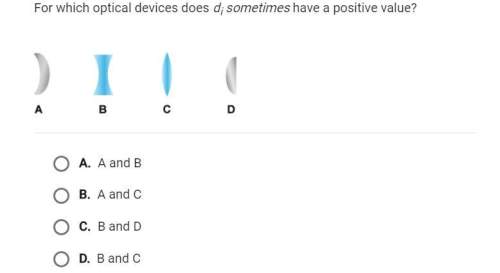
A ball of mass m moving with velocity v⃗ i strikes a vertical wall as shown in (Figure 1). The angle between the ball's initial velocity vector and the wall is θi as shown on the diagram, which depicts the situation as seen from above. The duration of the collision between the ball and the wall is Δt, and this collision is completely elastic. Friction is negligible, so the ball does not start spinning. In this idealized collision, the force exerted on the ball by the wall is parallel to the x axis.
A) What is the final angle θf that the ball's velocity vector makes with the negative y axis?
Express your answer in terms of quantities given in the problem introduction.
B) What is the magnitude F of the average force exerted on the ball by the wall?
Express your answer in terms of variables given in the problem introduction and/or v*ix*.

Answers: 2


Other questions on the subject: Physics

Physics, 21.06.2019 18:50, NycLife
How does the image distance (di) of a convex lens compare with the image distance of a concave lens? a. the image distance of the convex lens is positive, and that of the concave lens is negative. b. both are negative for a virtual image. c. both are positive for a virtual image d. the image distance of the convex lens is negative, and that of the concave lens is positive.
Answers: 1


Physics, 22.06.2019 03:30, Bryanguzman2004
Two polarizers are oriented at 24.0∘ to one another. light polarized at a 12.0-degree angle to each polarizer passes through both. what is the transmitted intensity (%)?
Answers: 2
You know the right answer?
A ball of mass m moving with velocity v⃗ i strikes a vertical wall as shown in (Figure 1). The angle...
Questions in other subjects:

History, 16.04.2020 18:05


Mathematics, 16.04.2020 18:05





Biology, 16.04.2020 18:05


English, 16.04.2020 18:05




